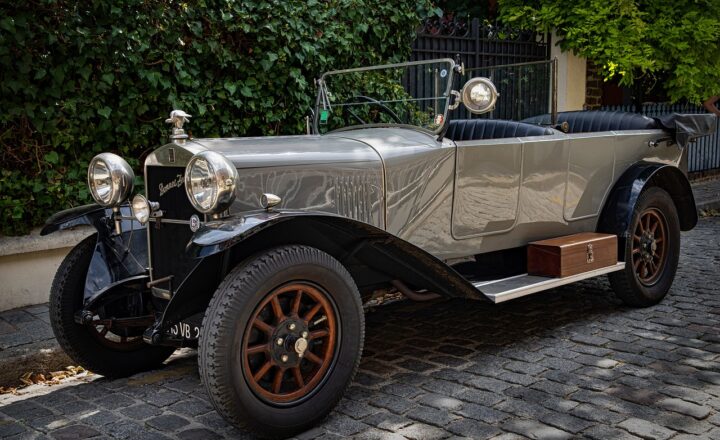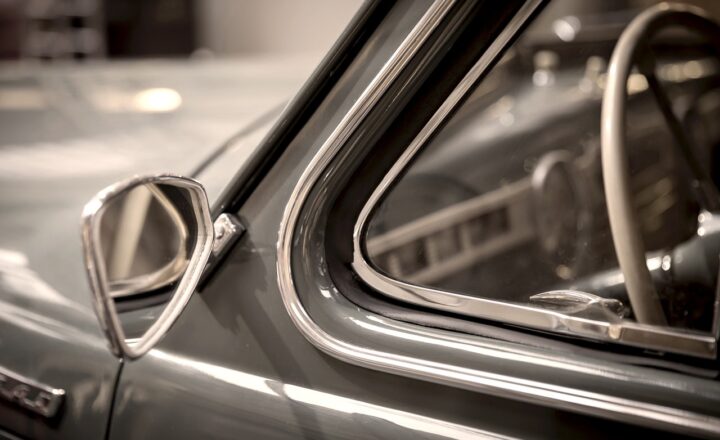Unlocking the Secrets of the World’s Most Iconic Cars: A Journey Through Automotive History
November 18, 2024

Automobiles have become a symbol of freedom, innovation, and style. They are more than just machines used for transportation; they embody the spirit of their era, incorporating advances in technology and design that reflect societal changes and consumer desires. In this article, we will explore the history behind some of the most iconic cars in the world, diving into the stories that shape their legacy and what makes them true masterpieces of automotive engineering.
1. The Birth of the Automobile: Early Innovations
The concept of the automobile dates back to the late 19th century when inventors began to experiment with steam engines and internal combustion engines. Karl Benz is often credited with creating the first true automobile, the Benz Patent-Motorwagen, in 1886. This three-wheeled vehicle featured an internal combustion engine and showcased innovative designs, such as electric ignition and a water radiator.
The invention of the automobile marked a significant shift in transportation, offering a faster, more comfortable alternative to horse-drawn carriages. With the introduction of the automobile, a new cultural phenomenon emerged—car enthusiasts began to look at cars as not just tools for transport, but also objects of passion and creativity.
2. The Roaring Twenties: Glamour and Style
The 1920s brought about an explosion of automotive creativity and style. In this decade, classic car brands like Cadillac, Packard, and Ford introduced models that would become legendary. Cars were now symbols of status, and luxury vehicles equipped with advanced features, like electric starters, became widely sought after.
- Cadillac V8 (1915): The first mass-produced car with an eight-cylinder engine, the Cadillac V8 set a new standard for power and performance.
- Ford Model T (1908-1927): Though it began production earlier, its influence lasted into the twenties. The Model T revolutionized the mass production of automobiles with Henry Ford’s assembly line, bringing cars into the hands of the average American.
These models immortalized the luxury of the roaring twenties and showcased the bold, ambitious spirit of the era.
3. Mid-Century Marvels: The Age of Performance Cars
The 1950s and 60s saw the rise of performance cars, as manufacturers like Chevrolet, Ford, and Ferrari sought to create vehicles that captured the thrill of speed and power.
- Chevrolet Corvette (1953): Launched in 1953, the Corvette represented American innovation, using fiberglass for its body, making it lightweight and sportier. It quickly became a symbol of American muscle cars and is still highly revered today.
- Ford Mustang (1964): Introduced at the New York World’s Fair, the Mustang set the stage for the Pony Car class and brought a newfound sense of individuality to American consumers. It became an instant classic, appealing to a youthful demographic craving adventure.
- Ferrari 250 GTO (1962): Often considered one of the most beautiful cars ever made, the 250 GTO combined elegance with motorsport pedigree. Its racing successes made it a highly collectible piece of automotive history.
The mid-century automobile became a canvas for expression, culture, and performance, dramatically shifting the landscape of the car industry.
4. The Oil Crisis and the Birth of Fuel Efficiency
The 1973 oil crisis forced automakers to reevaluate their designs, and the focus began to shift toward fuel efficiency and environmental consciousness. Compact cars gained traction as consumers desired economical alternatives to gas-guzzling vehicles.
- Volkswagen Beetle: Originally produced in the late 1930s, the Beetle became emblematic of the shift toward smaller cars, known for its comedic shape and economic performance. It also gained immense popularity in the 60s and 70s, becoming a counter-culture icon.
- Honda Civic (1972): Debuted during this era, the Civic quickly gained reputation for its excellent fuel efficiency and reliability, making it a favorite among consumers globally and establishing Honda as a significant player in the automotive world.
This period laid the groundwork for today’s emphasis on sustainable driving solutions and has become a significant turning point for automobile manufacturing.
5. The Modern Era: Technology and Innovation
The advent of the digital age has brought innovations that are rapidly transforming the automotive industry. Cars now come equipped with advanced technology like AI, electric engines, and autonomous driving capabilities.
- Tesla Model S (2012): The Model S reshaped the automotive landscape by proving that electric vehicles can deliver performance, range, and luxury, significantly reducing reliance on fossil fuels and setting the stage for numerous EVs in the future.
- Mercedes-Benz S-Class: The S-Class has consistently been a showcase for new technologies, including semi-autonomous driving features, advanced safety systems, and luxurious interiors, cementing its status as luxury car royalty.
Innovation continues to drive the automobile industry forward, exploring new frontiers in sustainability and performance while keeping the thrill of driving alive.
Conclusion: A Legacy on Wheels
The story of iconic cars is not merely about the machines themselves, but about the cultural and historical significance woven into their designs. Each car tells a story; be it the lavish styles of the roaring twenties or the technologically advanced vehicles of today, they reflect our values and aspirations throughout history. As we journey through automotive history, one thing is clear: the passion for cars will continue to evolve, but the love for these exceptional machines will remain timeless.
With every rev of the engine and every mile traveled, the legacy of these iconic cars drives forward, inspiring new generations of car enthusiasts and reminding us of the innovation, art, and spirit that the automobile represents.







